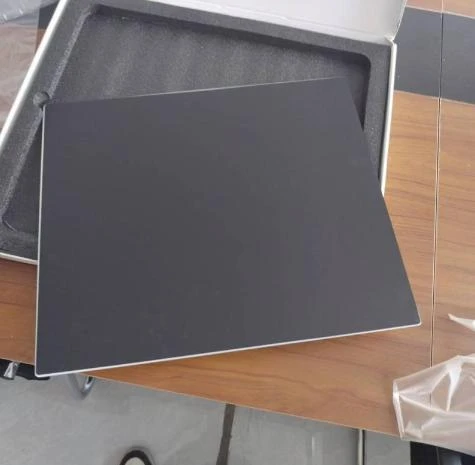The Beauty and Versatility of Blue Float Glass
Blue float glass has emerged as a popular choice for architects, designers, and homeowners looking to incorporate unique design elements into their projects. Its vivid hue, combined with the practical advantages of float glass, makes it an exceptional material for a variety of applications.
Float glass, a type of glass that is produced by floating molten glass on top of molten tin, possesses a smooth, flat surface and is free from imperfections. The process ensures that the glass is uniform in thickness and clarity. The introduction of blue tint gives the glass a beautiful, serene appearance, reminiscent of the sky or the ocean, which can enhance the aesthetic appeal of any space.
One of the most significant benefits of blue float glass is its versatility. It can be used in a myriad of applications, ranging from windows and facades to interior design elements such as partitions, tabletops, and decorative features. In commercial buildings, blue float glass can create an inviting atmosphere, while also providing necessary privacy and protection from ultraviolet rays. The reflective properties of the glass help reduce heat absorption, making it an energy-efficient choice.
blue float glass
From a design perspective, blue float glass can transform ordinary spaces into extraordinary environments. The rich color can serve as a striking focal point or can be paired with neutral tones for a more harmonious look. Its aesthetic qualities make it an ideal choice for modern architecture, where the interplay of light and color is crucial. Whether used in residential or commercial settings, blue float glass adds elegance and sophistication.
Moreover, the durability of float glass ensures that it remains a long-lasting option for both indoor and outdoor applications. It is resistant to scratching and can withstand varying weather conditions, making it suitable for use in diverse climates. With proper care, blue float glass can maintain its vibrant color and clarity for years to come.
As sustainability becomes increasingly important in today’s construction practices, blue float glass also aligns with eco-friendly standards. Many manufacturers emphasize responsible production methods and recyclable materials, further promoting its use in sustainable building projects.
In conclusion, blue float glass is not just a functional material; it is a versatile design element that can elevate any environment. Its beauty, durability, and energy efficiency make it a preferred choice for architects and designers alike, proving that practicality can coexist with aesthetics in the world of glass. Whether used in residential or commercial applications, blue float glass is truly a testament to the power of design in enhancing our everyday spaces.
 Afrikaans
Afrikaans  Albanian
Albanian  Amharic
Amharic  Arabic
Arabic  Armenian
Armenian  Azerbaijani
Azerbaijani  Basque
Basque  Belarusian
Belarusian  Bengali
Bengali  Bosnian
Bosnian  Bulgarian
Bulgarian  Catalan
Catalan  Cebuano
Cebuano  Corsican
Corsican  Croatian
Croatian  Czech
Czech  Danish
Danish  Dutch
Dutch  English
English  Esperanto
Esperanto  Estonian
Estonian  Finnish
Finnish  French
French  Frisian
Frisian  Galician
Galician  Georgian
Georgian  German
German  Greek
Greek  Gujarati
Gujarati  Haitian Creole
Haitian Creole  hausa
hausa  hawaiian
hawaiian  Hebrew
Hebrew  Hindi
Hindi  Miao
Miao  Hungarian
Hungarian  Icelandic
Icelandic  igbo
igbo  Indonesian
Indonesian  irish
irish  Italian
Italian  Japanese
Japanese  Javanese
Javanese  Kannada
Kannada  kazakh
kazakh  Khmer
Khmer  Rwandese
Rwandese  Korean
Korean  Kurdish
Kurdish  Kyrgyz
Kyrgyz  Lao
Lao  Latin
Latin  Latvian
Latvian  Lithuanian
Lithuanian  Luxembourgish
Luxembourgish  Macedonian
Macedonian  Malgashi
Malgashi  Malay
Malay  Malayalam
Malayalam  Maltese
Maltese  Maori
Maori  Marathi
Marathi  Mongolian
Mongolian  Myanmar
Myanmar  Nepali
Nepali  Norwegian
Norwegian  Norwegian
Norwegian  Occitan
Occitan  Pashto
Pashto  Persian
Persian  Polish
Polish  Portuguese
Portuguese  Punjabi
Punjabi  Romanian
Romanian  Russian
Russian  Samoan
Samoan  Scottish Gaelic
Scottish Gaelic  Serbian
Serbian  Sesotho
Sesotho  Shona
Shona  Sindhi
Sindhi  Sinhala
Sinhala  Slovak
Slovak  Slovenian
Slovenian  Somali
Somali  Spanish
Spanish  Sundanese
Sundanese  Swahili
Swahili  Swedish
Swedish  Tagalog
Tagalog  Tajik
Tajik  Tamil
Tamil  Tatar
Tatar  Telugu
Telugu  Thai
Thai  Turkish
Turkish  Turkmen
Turkmen  Ukrainian
Ukrainian  Urdu
Urdu  Uighur
Uighur  Uzbek
Uzbek  Vietnamese
Vietnamese  Welsh
Welsh  Bantu
Bantu  Yiddish
Yiddish  Yoruba
Yoruba  Zulu
Zulu 

